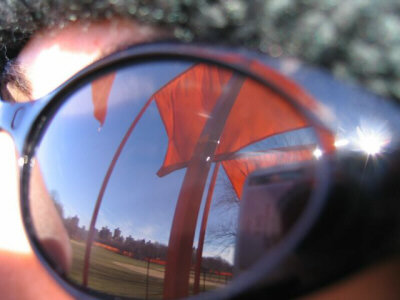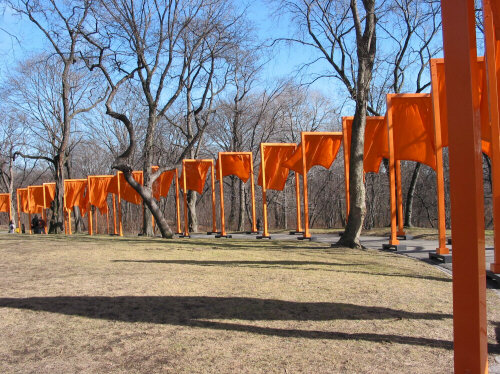 I have used words like "sanctity" to describe the chain of liminal spaces defined by the gateways, and the gates are enlivening, community-defining, beautiful -- but are they really righteous? Is Sha’arei Tzedek – “the Gates of Righteousness” an overstatement?
I have used words like "sanctity" to describe the chain of liminal spaces defined by the gateways, and the gates are enlivening, community-defining, beautiful -- but are they really righteous? Is Sha’arei Tzedek – “the Gates of Righteousness” an overstatement?
Prospect Park in Brooklyn is arguably as beautiful a park as Central Park but it isn’t as open. And, while both are vastly cosmopolitan, Central Park is where visitors to New York and locals mingle. Designed 152 years ago with exactly the intention of allowing the varied communities of the city -- Christian and Jewish, rich and poor, black and white -- to mingle in leisure together, Central Park's egalitarianism is more than just ‘nice.’ In a city where the excesses of late capitalism mean that the gap between the wealthiest and the poorest in the city is greater than any other city in the world, the visible reminder that this difference is contingent and, finally, unimportant is indeed ‘righteous’ because, in the face of the massive constructions of capital, it reminds us of what is ‘right.’ Although the old gospel song “Twelve Gates to the City” says that the visitors would be dressed in red, not orange, the sentiment of the song is exactly that of the installation – “Rich and the poor welcome to the city / Young and the old welcome to the city / Weak and the strong welcome to the city.”
Why Sha’arei Tzedek? As Gabriel Sanders pointed out in the Forward (18th Feb. 2005) there are rabbis around the edge of the park who have used the occasion to remind their congregations about the images of the “gates of prayer” or the “gates of repentance” of Yom Kippur. He describes Rabbi Michael Strassfeld, former pioneer of the Chavurah movement and co-author of The Jewish Catalog singing from Psalm 118 "Pitchu Li Shaarei Tzedek” ("Open to me, gateways of justice") and it is from this psalm that I draw my title. It is a psalm written in honour of God’s mercy and it is this particular enduring trust in a central Holiness despite centuries of persecution, a commitment to justice despite millennia of suffering that I want to evoke. At the same time, we must not rest on memories of victimhood, nor assume that power is the answer. The psalm itself has a vengeful streak in it – “All nations compassed me about: but in the name of the Lord will I destroy them” – that I think has no part in the Tzedek of these gates at this time. Yet the physical presence of the gates provides Jewish communities, among others, with an opportunity to think about, enjoy, and question the metaphorical and historical possibilities of the gates of justice.
But the connection is deeper than just some nearby congregations and a few ritual echoes. Since the fall of the Temple Jews have been bound together by invisible links. There have been real communities, kehilot, but the wider Jewish community has always been less connected by geography than by a variety of ethnic, religious, and traditional links. Recently the internet has, through publications like this one and through services like JDate, allowed the virtual links between distant sections of the Jewish community to become visible. The paths of Central Park have likewise been made visible by these 7500 gates in a way that we, as Jews, should particularly recognize. The links are temporary, open to interpretation, and contingent, but the testify to a vital community coming into contact with itself and with the outside world without a trace of defensiveness.
 In the same way that the soul of Boston is Irish, the soul of New York, is Jewish. This is not meant in an exclusive way – just as Boston has vital Italian and African American communities, New York rightly prides itself on the diversity of its successes – nor is it likely to continue, as New York's ethnic-cultural mix shifts. Rather, it is to say that New York’s uniqueness lies in the Jewish contribution to its subconscious. To a greater extent than in any other city in the world Jewishness is the nostalgic folk culture of New York. These gates, these orange flags that provide a canopy between the human scale and that of the trees remind us that we are always capable of being with people, and being in the world in a better way than we are. The orange glow of the park is a reminder that bringing Spring to the world, in all but the most mundane of meanings, is a human responsibility. The obligation to repair the world rests on us, and we are gently brought to that realization through the transformation of the world by The Gates – these Sha’arei Tzedek of Central Park.
In the same way that the soul of Boston is Irish, the soul of New York, is Jewish. This is not meant in an exclusive way – just as Boston has vital Italian and African American communities, New York rightly prides itself on the diversity of its successes – nor is it likely to continue, as New York's ethnic-cultural mix shifts. Rather, it is to say that New York’s uniqueness lies in the Jewish contribution to its subconscious. To a greater extent than in any other city in the world Jewishness is the nostalgic folk culture of New York. These gates, these orange flags that provide a canopy between the human scale and that of the trees remind us that we are always capable of being with people, and being in the world in a better way than we are. The orange glow of the park is a reminder that bringing Spring to the world, in all but the most mundane of meanings, is a human responsibility. The obligation to repair the world rests on us, and we are gently brought to that realization through the transformation of the world by The Gates – these Sha’arei Tzedek of Central Park.

February, 2005
Philip Roth's "The Plot Against America"
November, 2004
The spirit and the machine
August, 2004
Lost in Translation: A snapshot of the evansescent
October, 2003
James Turrell and the truth of light
April, 2003
Anxiety on the National Mall
January, 2003
What is modernism?
July, 2002
What draws protesters to banal holocaust art?
April, 2002



Shakey: An Essay on Anger
Jay Michaelson
Giving Thanks to Elijah the Prophet in Indian Manhattan
Jonathan Schorsch
Three Nights
Jill Hammer
The Pursuit of Justice
Emily Rosenberg
Sha'arei Tzedek
Dan Friedman
God's Unchanging Hand
Daniel Cohen
Archive
Our 610 Back Pages
Neurotic Visionaries & Paranoid Jews
April 7, 2005
Zeek in Print
Fall/Winter 2004 issue now on sale
About Zeek
Mailing List
Contact Us
Subscribe
Tech Support
Links
From previous issues:
Money-Back Guarantee
Samantha Stiers
Then
Avi Levy
The Truth about the Rosenbergs
Joel Stanley
 Email us your comments
Email us your comments